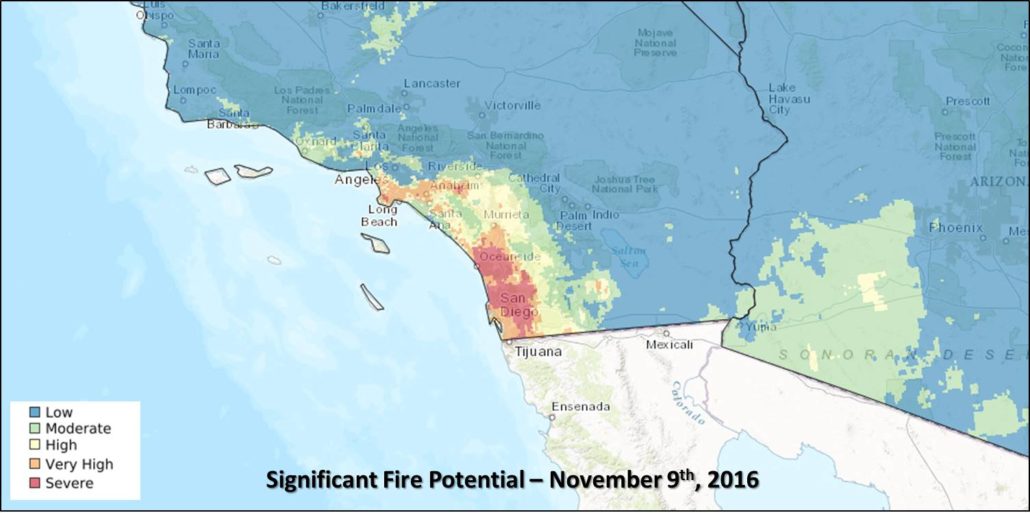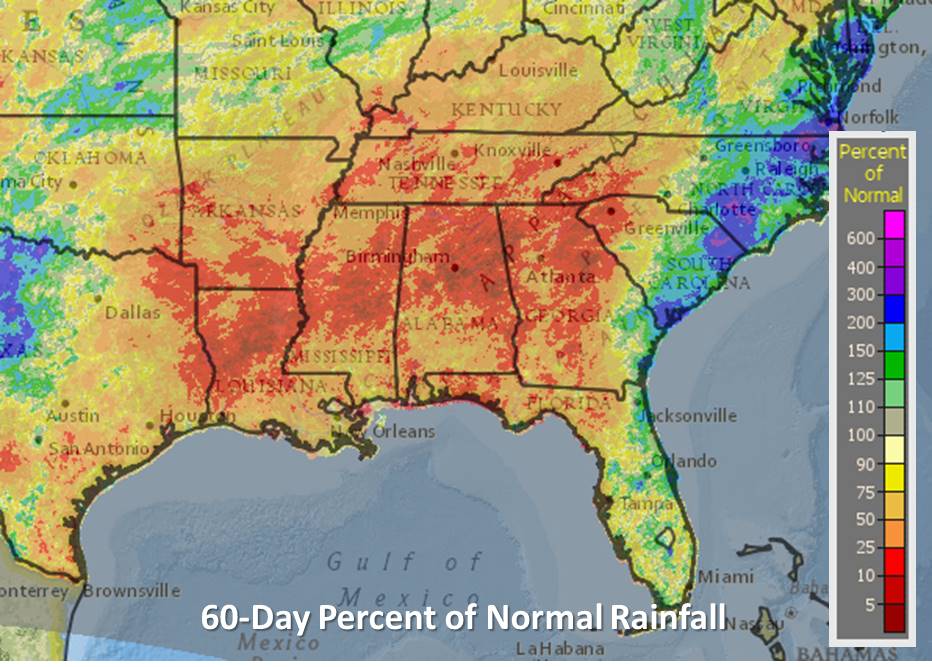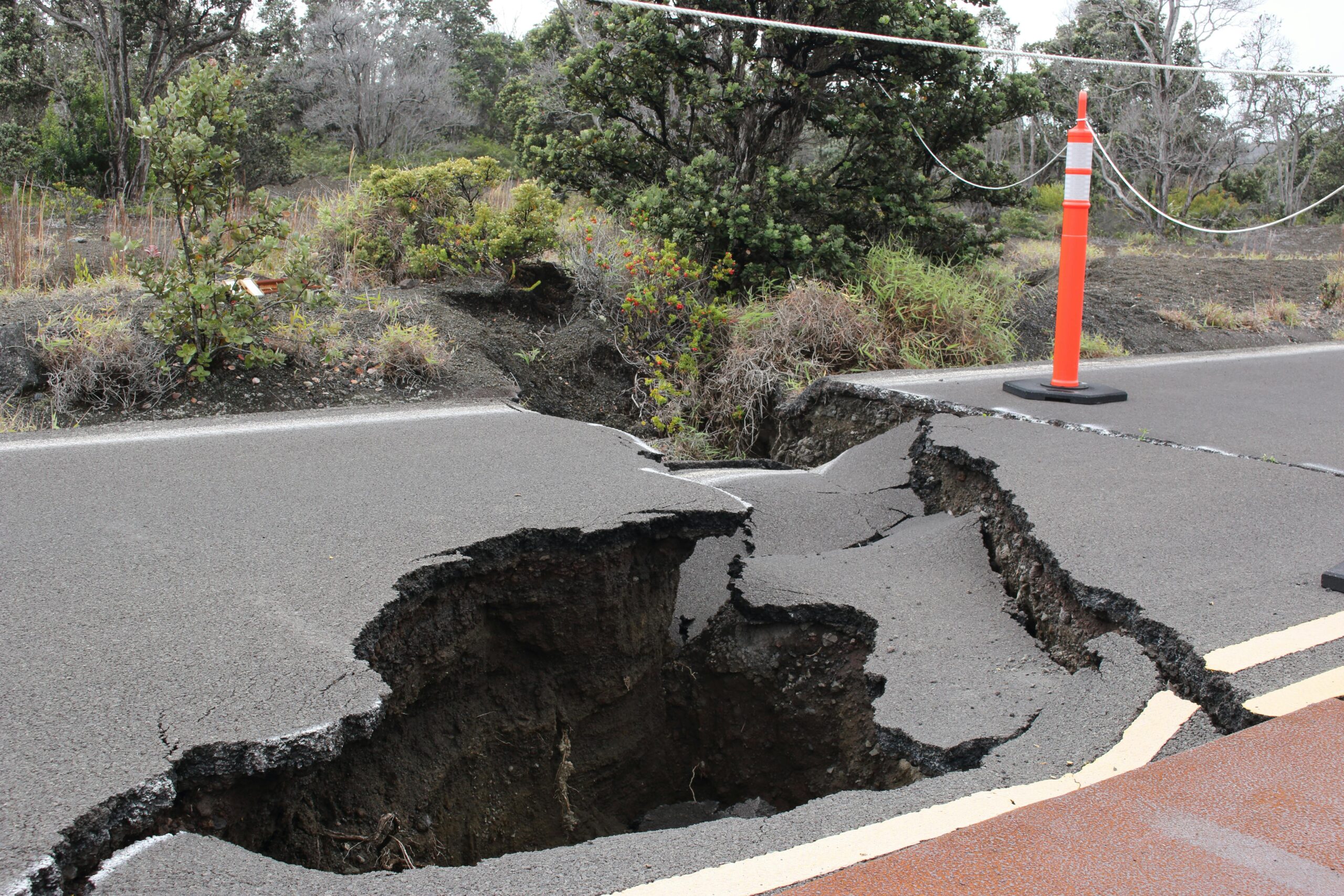Every year, fire season comes to an end in the Western US as winter weather creeps in. The northern high elevation forests soak in autumn rains and significantly lower temperatures, and the focus of fire potential subsequently shifts to only a few targeted areas. Because of significant drought this season and persistent high winds, that focus remains on two regions in particular: Southern California and the Southern Appalachian Mountains.
Another Offshore Event for Southern California
The seemingly year-round fire season in Southern California trudges on as fire services in the area remain at summer staffing levels. Long term drought is constantly a factor in these areas, and periodic offshore wind events bring occasional elevation of wildfire concern. This week will mark the fourth such wind event of the fall with a Santa Ana event arriving today and lasting into Thursday, prompting a Red Flag Warning. Coastal areas from Santa Barbara through Tijuana will see significant fire potential as a result. The offshore event will particularly impact San Diego and Riverside Counties where the winds will be strongest and humidity lowest.

Southern California will see High to Severe Fire Potential on November 9th and 10th
Elevated Fire Potential for Southern Appalachian Mountains
The 60 day percent of normal rainfall map (below) highlights significant rainfall deficits running from east Texas eastward to the western Carolinas. As a result, the Southern Appalachian area of the Southeastern US is in Preparedness Level 5 (PL 5) and has issued a ‘Fuels and Fire Behavior Advisory’ through November 20th. The advisory warns that the areas with highest rainfall deficits have very dry surface fuels that will support significant fires in high risk fuel types when elevated or critical fire weather is present.
Critically dry fuels and rampant fire ignitions have been observed from the Florida panhandle through Alabama to the mountains in Tennessee and North Carolina. Due to the concerning conditions, fire activity is peaking in the region. There are currently 38 ongoing, uncontained large fires in the region, many with incident command teams actively suppressing or patrolling them. By December, the area’s fire activity is expected to drop back to normal levels as temperatures cool to mostly seasonal ranges. In the meantime, two more weeks of concern lie ahead.

Rainfall deficits fueling major fire activity in the Southern Appalachian Mountains & prompting PL 5 in Southern Area




One Comment